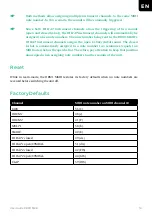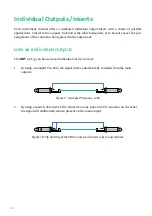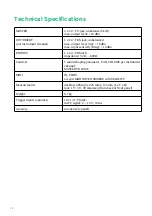
SNARE
Figure 6: SNARE instrument channel of the DRM1 MKIII
The duty of the
SNARE
instrument channel is apparent. However, due to its various parameters, the
DRM1 MKIII’s snare drum is a lot more changeable than you might guess from previous analogue
drum machines. The sound is build up from different components: noise, a needle impulse, a
resonance filter and a pseudo reverb. This allows a wide spectrum of sounds ranging from short
“clacks”, resembling old beat boxes, to compact snare sounds with noise components and additional
reverb.
DECAY REV
sets the length of the reverb effect. This parameter’s effect is only audible with
REVERB
being enabled.
REVERB
adjusts the intensity of the reverb effect. With this control set fully counterclockwise,
the reverb is disabled.
DECAY N
sets the release time or length of the sound’s noise component. This parameter’s
effect is only audible with
NOISE
being enabled.
NOISE
sets the volume of the sound’s noise component. By this, the snare will receive
more body and therefore sounds more authentic. With this control set fully
counterclockwise,
NOISE
is disabled.
ATTACK
adds a short fixed needle impulse to the sound’s start to support its assertiveness
on the one hand, but is also used to initiate oscillation of the resonance filter
component. The audibility of the needle impulse also depends upon the intensity
of the filter’s resonance. Always adjust
ATTACK
in correlation to the complete mix.
What might appear too intrusive when being soloed might already sound too gentle
within a full mix.
RESO
specifies the intensity of the filter’s resonance and, as a result, colors the tonal
component of the snare sound. Only at higher values, the filter will start to self-
oscillate.
FILTER
sets the cutoff frequency of the low pass filter. Presuming the filter has been excited
to oscillate, this control adjusts the pitch of the snare’s tonal sound component.
14




























